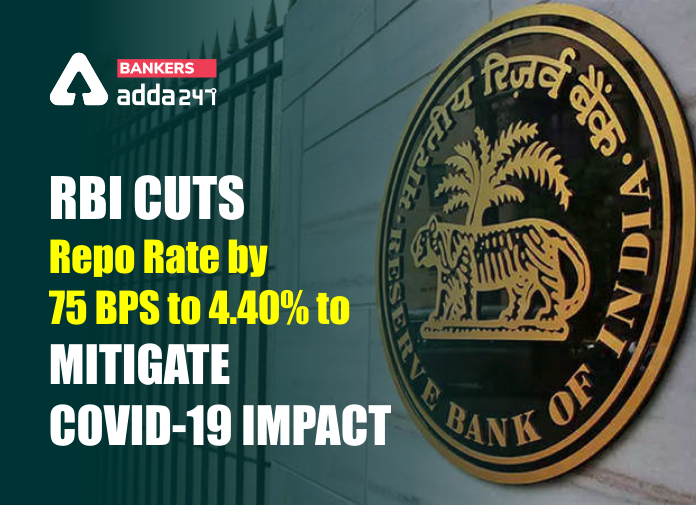RBI Repo Rate 2020: The coronavirus has caused an upheaval in the global economy. It has had the same impact on the health of millions of citizens across the world. Like other nations, India is also facing the mammoth task of getting back on its feet. After much deliberation, the RBI has put forward a proposal of cutting down on the repo rate by 75 basis points. It is a lot considering it got brought down to 4.4%.
RBI cuts repo rate to increase liquidity in the economy.
This repo rate change is the lowest ever and is a measure that has been taken to stabilize the economy induced by the coronavirus crises. The central bank reworked on the cash reserve ratio by 100 basis points to 3%. The changes will come on effect from 28th March.
Practice with,
RBI has looked into the reverse repo rate as well and pushed it down by 90 basis points. These decisions were taken during the review committee meeting when deciding the monetary policy. Over a three day deliberation over the current economic situation, they have decided to suggest this whopping cut in the repo rates.
The lockdown and its impact on business activities have put pressure on the economy. During the vote to bring in the cut, four people voted for the cut out of the six committee members who thought otherwise. RBI had reiterated that the functioning of the markets would continue as before as they were on a mission mode to prevent the free fall of the economy due to the current crisis.
The finance minister has welcomed the cut and said that it would bring in financial stability and push growth. There is a need to push for liquidity for the times that we are facing because of the outbreak. Other financial instruments as such are utilized and worked upon to improve monetary transmission.
The RBI has directed banks and lending institutions in the country to rework the repayment schedule and moratorium for three months. These measures are taken to prevent large NPAs that would follow during the low in the business and industries. It is a way of reducing the risk weights. This would work for the term loans that were given out by lending institutions beginning from 1st March 2020.
The RBI governor was quoted in saying that the debt servicing has to be mitigated for the burden to shift. The measures definitely will work on
- Easing working capital pain
- Reduce liquidity costs
- Provide moratorium on term loans
It would alleviate stress on various sectors of the economy. The RBI over the few days has worked to put in liquidity so that banks flush out their excess cash and revive the system. The repo and reverse repo exercises get taken so that the anomalies that were between the two interest rates can be corrected. The parking period of the money by the bank will earn them interest for that the tenor of the auctions taking place will happen throughout 13 days.
Finally, the measures that the RBI has announced have assured the depositors that their money is secure and the bank stocks crash need not cause them to worry. The citizens, industrialists, economists, and trade analysts have praised the action and welcomed the measure and anticipate that the economy will once again bounce back after the corona turmoil.
Also Read,
- Corona Relief Package: List of Economic Stimulus Package Announced by FM Nirmala Sitharaman
- Important Topics to Practice for SBI Clerk Mains 2020 Exam- Section-wise Details
- SBI Clerk Mains Likely To Be Postponed
Frequently Asked Questions
Q. What is Repo Rate?
It is the rate at which the Reserve bank of India lends money to commercial banks in the event of any shortfall of funds. Repo Rate is used by monetary authorities to control inflation.
Q. What does Repo Rate stands for?
REPO RATE is short form for Repurchase Rate.
Q. What is Reverse Repo Rate?
It is exactly the opposite of repo rate, it is the rate at which RBI borrows money from banks for short term. The Repo Rate is always higher than the reverse repo rate.
Q. What happens when the Repo Rate is low?
During the scenario of Low repo rate banks can borrow money from the Reserve Bank of India at a low cost.
Click Here to Register for Bank Exams 2020 Preparation Material



 Daily Current Affairs 14th July 2025, Im...
Daily Current Affairs 14th July 2025, Im...
 Weekly Current Affairs One Liners 07th t...
Weekly Current Affairs One Liners 07th t...
 Daily Current Affairs 12th July 2025, Im...
Daily Current Affairs 12th July 2025, Im...


